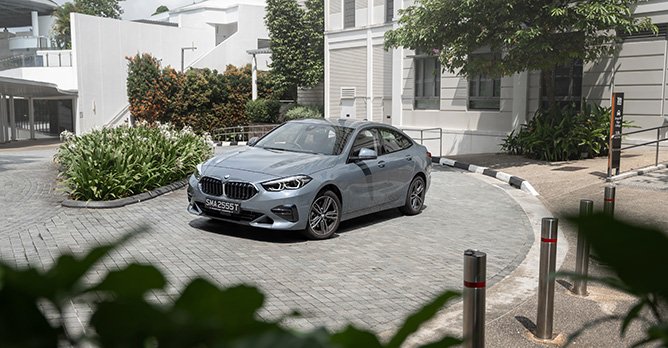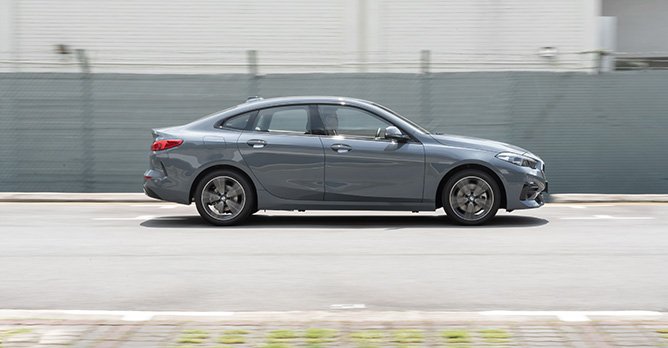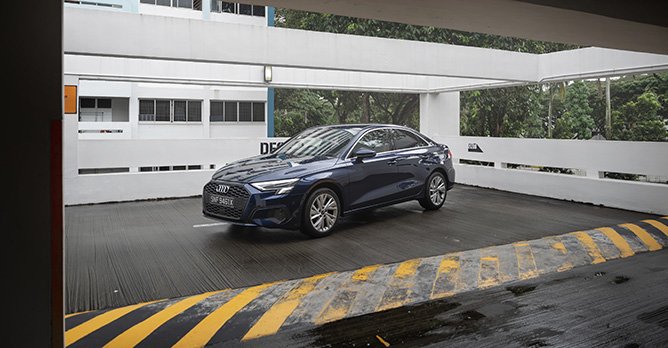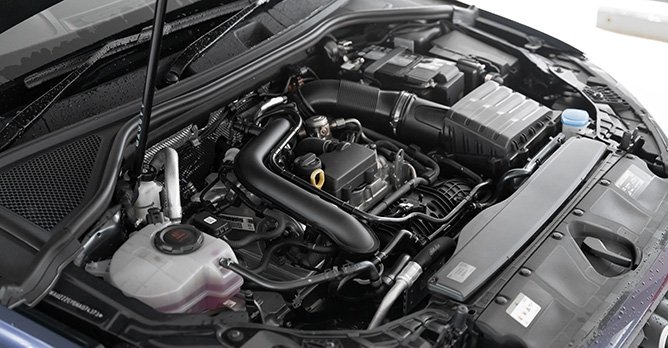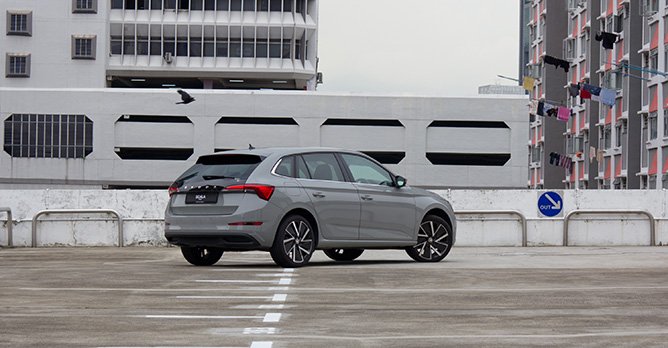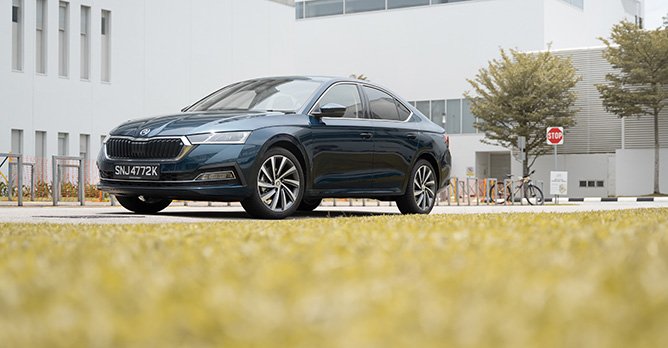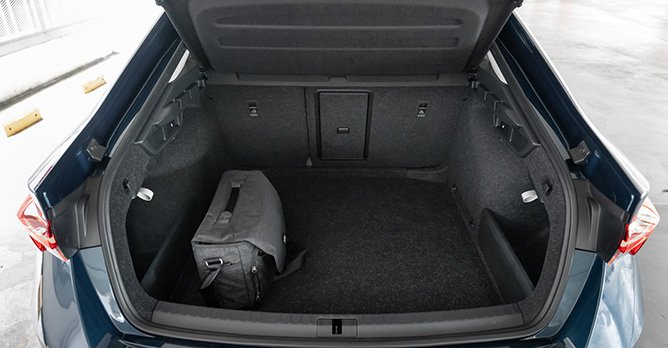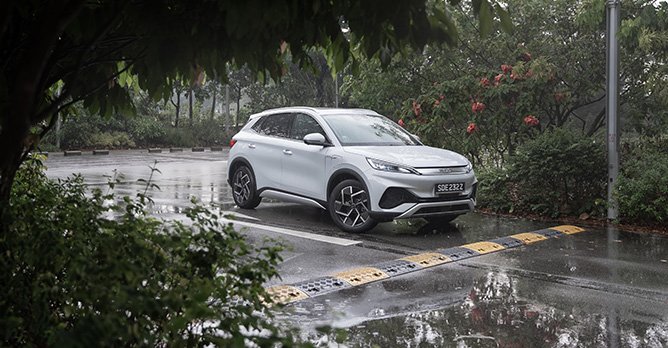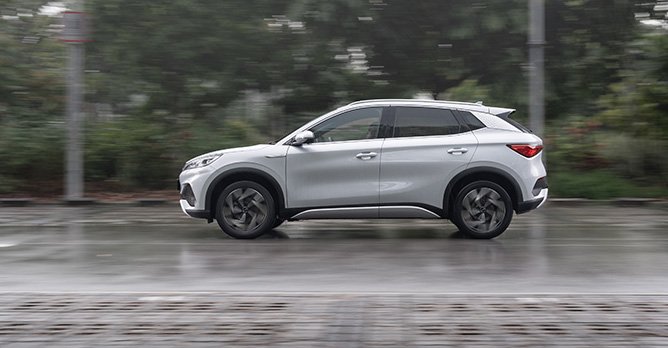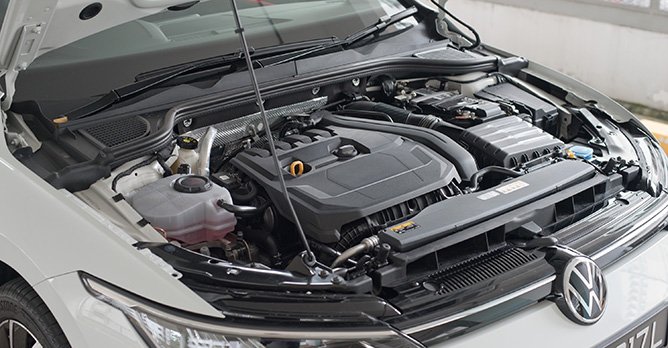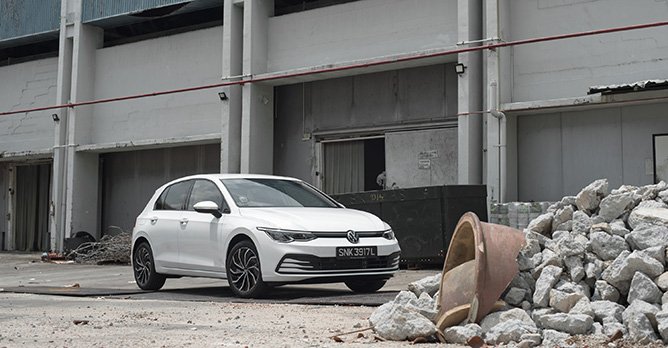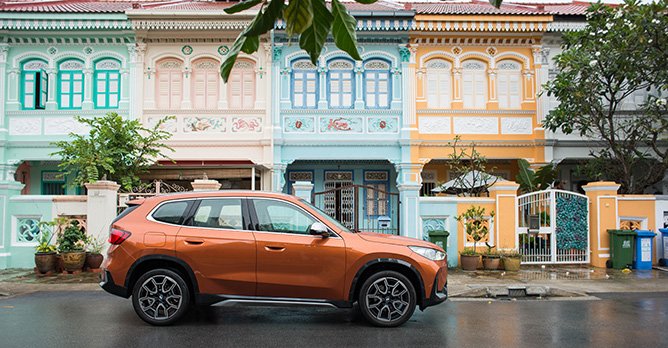Reintroductions: Every car that has gone from Category B to Category A in the last 12 months (May 2023)
18 May 2023|30,545 views
As the COE think-pieces, and recently, even parliamentary debates, persist against a backdrop of general resignation that car prices will remain at exorbitant heights, local dealers are fighting tooth and nail to ensure that their cars remain affordable wherever possible.
Moving a car from Category B (for larger cars with more powerful engines) to Category A (for 'mass market' models) is no longer a silver bullet for affordability as $100k premiums in the latter have recently shown. Nonetheless, the fact remains that a sizable price gap remains between both categories - at least $20,000, in fact, at the time of writing.
Over the past year, various models have consequently tried to escape the reaches of that extra five-figure sum in reintroduced forms. While premium carmakers count themselves as part of this crew, you'll find names here too that - we'd argue - have rightfully belonged to Category A from the outset. Here are all seven of them:
1. BMW 2 Series Gran Coupe (Same engine, lower output) - May 2022
The influx of Category A reintroductions in this current era of 'COE Premium Craziness' was arguably kickstarted by BMW's 2 Series Gran Coupe (2GC) - with which we were first acquainted back in 2018. In 218i guise, the car's turbocharged inline-three mustered 134bhp and 220Nm of torque.
With its reintroduction, however, its engine is now tuned to 107bhp and 190Nm of torque, thus easily satisfying the Category A output cap of 130bhp. In doing so, it's now also taken the fight straight to its direct rival: The Mercedes-Benz CLA-Class C180. (By official designation, these are the only two compact 'four-door coupes' in the market.)
The power drop means that the 216i completes the century sprint two seconds slower than the 218i, clocking in at 10.8s. Also worth noting is that while the 218i was offered in both Luxury and M Sport trims, both were axed in favour of a Sport trim in the 216i. For instance, it drops foglamps and cruise control.
Nonetheless, as we previously noted, even in 216i form, the 2GC is still quite well-equipped, and maintains commendable levels of driver engagement that are commensurate with the brand's longstanding reputation.
2. Audi A3 Sedan/Sportback (From 1.5-litre to 1.0-litre variant) - June 2022
It's unlikely most people will be able to tell the 1.0-litre variants of Audi's A3 Sedan and Sportback apart from their more powerful 1.5-litre twins on first glance. Only a keener eye would have noted the pair now shod with different tyres, differently-designed rims, and that bits of chrome on its front and rear aprons have now been painted over in black.
With the removal of sport seats, equipment onboard, however, remains exactly the same as before.
The 1.0-litre A3s retain Audi's intuitive MMI infotainment system in exact same iteration - spread out across a responsive 10.1-inch central touchscreen, and the same 12.3-inch driver's display.
Instead, the significant changes have all occurred beneath the skin. In place of a multi-link rear suspension, both 1.0-litre variants get a torsion beam suspension instead. Even more pronounced is the downsized power: 109bhp and 200Nm of torque (take note of these figures, for you'll see them quite a bit on this list), compared to 148bhp and 250Nm in the 1.5-litre variants.
The wonders of turbocharging once again nonetheless mean that the average driver is unlikely to complain about the power dip, as peak torque arrives quite early. In addition, thanks to the mild hybrid system in the pair, a 1.0-litre engine has genuine financial appeal: Improvements in fuel efficiency.
3. Skoda Scala (From 1.5-litre to 1.0-litre variant) - Dec 2022
Here's something interesting to note about the Skoda Scala: In base Ambition trim, the 1.0-litre variant is fitted with the firm's 'Bolero' 8.0-inch central infotainment screen, an upgrade from the 'Swing' 6.5-inch one on the 1.5-litre variant at launch.
This probably comes as no surprise, but with engines shared widely across Volkswagen Group, the Scala's current 1.0-litre three-pot is similar to the one utilised in the Audi A3, producing 109bhp and 200Nm of torque. Where the difference lies, however, is in platforms: The Scala rides on the MQB A0 platform, rather than the A3's MQB Evo one. It also doesn't get a mild hybrid drivetrain.
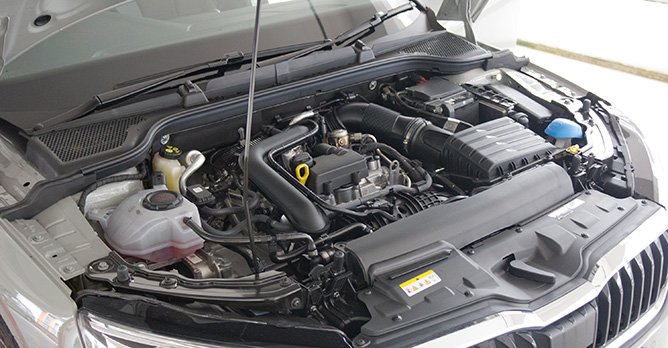
 As the smallest model in the lineup, the Scala is now one step closer to Skoda's promise of good value Other differences to note alongside the downsized engine include the removal of some features that only the pickiest buyers should miss. For example, the base 'Ambition' trim no longer offers wireless smartphone charging; you'll also need to upgrade to the 'Style' for a variable boot floor.
As the smallest model in the lineup, the Scala is now one step closer to Skoda's promise of good value Other differences to note alongside the downsized engine include the removal of some features that only the pickiest buyers should miss. For example, the base 'Ambition' trim no longer offers wireless smartphone charging; you'll also need to upgrade to the 'Style' for a variable boot floor.
Otherwise, as the smallest car in Skoda's range, the Scala feels more honest than ever as a Category A car to the Czech marque's promise of good value.
4. Skoda Octavia Mild Hybrid (From 1.5-litre to 1.0-litre variant) - Jan 2023
Although it has relentlessly inched up the value segment (especially with this latest generation), the Octavia was never meant to be a car out of reach to the masses. Getting shoved in with the same 1.5-litre engine as the Audi A3 and Skoda Scala (producing 148bhp and 250Nm) at launch, however, has meant that it was forced for a couple of years into Category B.
Like both of those cars, it was recently brought in with the exact same 1.0-litre unit that now opens the doors wide open to Category A.
In spite of the notable power difference, we've noted that the car thankfully retains the outstanding refinement that we first felt on the 1.5-litre model. Like the Audi A3, it has become even better at sipping fuel, too, thanks to its mild hybrid system. It's also still offered in the top-of-the-line 'Style' trim.
Above all, the Octavia's proposition remains unique: It's still the segment leader in space and practicality (we struggle to think of a similarly-sized sedan that can swallow a road bike whole), while also charming with its good looks.
5. BMW 2 Series Active Tourer (Same engine, lowered output) - Jan 2023
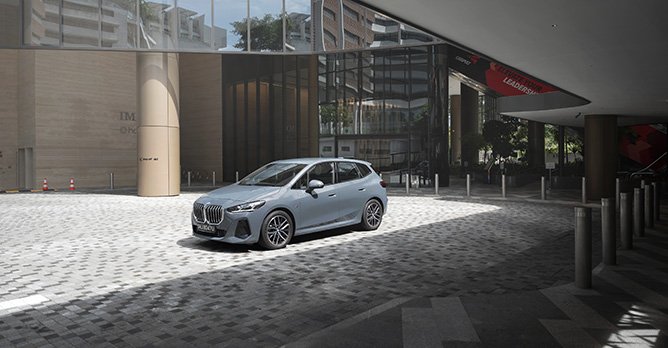
 Among all the cars on this list, the 2 Series Active Tourer experiences the smallest drop in power when going from Category B to Category A: Just 13bhp On our entire list, the crown for the smallest power drop when going from Category B to Category A goes to the BMW 2 Series Active Tourer (2AT).
Among all the cars on this list, the 2 Series Active Tourer experiences the smallest drop in power when going from Category B to Category A: Just 13bhp On our entire list, the crown for the smallest power drop when going from Category B to Category A goes to the BMW 2 Series Active Tourer (2AT).
Amazingly, the mini-MPV doesn't lose any shove in 216i form - peak torque remains at 230Nm. Power also only drops 13bhp, standing at 121bhp now compared to 134bhp previously in the 218i. It will complete the century sprint in a slightly more leisurely 10.3s, as opposed to 9.0s previously - but the difference is hard to feel from behind the wheel.
While the discontinued 218i (for now) was offered in 'Luxury' and 'M Sport' trim, however, only the latter is currently available - although that's no bad thing. There is zero equipment or feature loss, meaning you get to enjoy the 2AT's clean and modern dash, Curved Display, and array of safety assistance systems.
For keener drivers, the M Sport trim may just be the superior option anyway, since it means the 2AT is offered with Adaptive M Suspension as standard now.
6. BYD Atto 3 [100kW] (Same electric motor and battery, lowered output) - March 2023
Does 50kW (67bhp) make a world of difference? On paper, the instinct is to say 'Yes'.
With its power output revised to 100kW, the BYD Atto 3 goes from a 200bhp-commanding SUV to one with "only" 134bhp, thus taking more than two seconds longer to go from zero to 100km/h.
Realistically, however, drivers are far from shortchanged since the Atto 3's peak torque is unchanged at a very respectable 310Nm. Even better - or should we say, EV-en better - you get all of this shove with electrifying immediacy, meaning the car still has great ability to surge off the lights.
Furthermore, the 100kW Atto 3 is specced entirely like its 150kW twin, providing all the safety assistance features you might want, coupled with high-end touches such as a panoramic sunroof, and interior ambient lighting. Best of all, it still boasts a great real-world range of more than 400km.
We rarely say no to more power, but in our eyes, the Atto 3 feels most complete when it's priced competitively. This is exactly the configuration in which we would have had it from the start.
7. Volkswagen Golf Mild Hybrid (Same engine, lowered output) - Apr 2023
By the time it was announced in April this year, news of a Category A-friendly Volkswagen Golf, although still exciting, was perhaps no longer surprising or ground-breaking. After all, three of its Volkswagen Group-mates had already done the same.
What may be slightly intriguing, however, is the fact that in slotting into Category A, the Golf hasn't lost any engine cylinders. In its 129bhp 'Life' variant, the Golf is still powered by a turbocharged inline-four despite the power output and torque dip.
Similar to the 1.0-litre A3 Sedan/Sportback, the 129bhp Golf Life now gets a torsion beam rear suspension, instead of the multi-link one on the previous 148bhp Golf Life. But coming from that car, everything else remains the same on the inside.
The Golf, like the Scala and Octavia, is one of the models we'd argue fully deserves its spot in Category A (after all, how can a 'People's Car' thrive in Category B?).
You'll also note that among the ICE models mentioned in this article, it gets the most power still, with its output literally brushing the Category A ceiling. Consequently, it has the quickest century sprint, taking just 9.4s to hit 100km/h.
8. Special mentions: Hyundai IONIQ 5, BMW X1
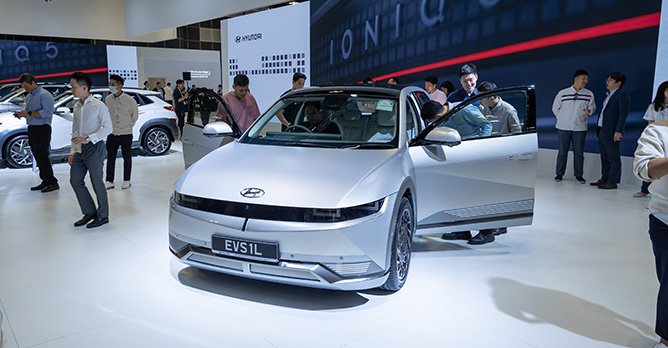
 True to its name, the Ioniq 5 Exclusive is currently not found elsewhere in the world (Ioniq 5 First 100 pictured) The two names in this final segment technically don't fit the list since they were already available in Category A at launch. Nonetheless, intriguing circumstances surrounding their release warrant special mention.
True to its name, the Ioniq 5 Exclusive is currently not found elsewhere in the world (Ioniq 5 First 100 pictured) The two names in this final segment technically don't fit the list since they were already available in Category A at launch. Nonetheless, intriguing circumstances surrounding their release warrant special mention.
The first, the Hyundai Ioniq 5, has made waves not simply because it accompanies the establishment of the Hyundai Motor Group Innovation Centre Singapore (HMGICS) and marks the first car to be assembled locally in forty years.
Instead, the Ioniq 5 is noteworthy because Hyundai Motor Group pulled the unexpected move of announcing an 'Exclusive' variant of the electric crossover, with its power output capped at 108kW in order to qualify for a Category A COE in Singapore. This is the first powertrain variant of its kind internationally.
Similarly, the local launch of the BMW X1 surprised many because the compact SUV was offered solely as the sDrive16i (utilising the same powertrain as the 216i Active Tourer).
Up to that point, the entry point to the X1 in international markets had been the more powerful sDrive18i.
With its powertrain, the X1 sDrive16i also broke ground for BMW as the first 'X' model to ever receive Category A classification in Singapore.
Here are a few other articles that may interest you!
Austerity Measures: Two 1.0-litre cars go head-to-head
Is the VW Golf still all the car you ever need?
What's next for BYD in Singapore?
Here are some of the best three-cylinder cars you can buy in Singapore now!
Downsizing doesn't mean downgrading: Three days and 1,800km of driving in Audi's Q3 Sportback 1.5 and A3 Sedan 1.0
What Drives Me (feat. Aarika Lee & THELIONCITYBOY): Raising a growing family in a car that remains true to who you are as a couple
Moving a car from Category B (for larger cars with more powerful engines) to Category A (for 'mass market' models) is no longer a silver bullet for affordability as $100k premiums in the latter have recently shown. Nonetheless, the fact remains that a sizable price gap remains between both categories - at least $20,000, in fact, at the time of writing.
Over the past year, various models have consequently tried to escape the reaches of that extra five-figure sum in reintroduced forms. While premium carmakers count themselves as part of this crew, you'll find names here too that - we'd argue - have rightfully belonged to Category A from the outset. Here are all seven of them:
1. BMW 2 Series Gran Coupe (Same engine, lower output) - May 2022
The influx of Category A reintroductions in this current era of 'COE Premium Craziness' was arguably kickstarted by BMW's 2 Series Gran Coupe (2GC) - with which we were first acquainted back in 2018. In 218i guise, the car's turbocharged inline-three mustered 134bhp and 220Nm of torque.
With its reintroduction, however, its engine is now tuned to 107bhp and 190Nm of torque, thus easily satisfying the Category A output cap of 130bhp. In doing so, it's now also taken the fight straight to its direct rival: The Mercedes-Benz CLA-Class C180. (By official designation, these are the only two compact 'four-door coupes' in the market.)
The power drop means that the 216i completes the century sprint two seconds slower than the 218i, clocking in at 10.8s. Also worth noting is that while the 218i was offered in both Luxury and M Sport trims, both were axed in favour of a Sport trim in the 216i. For instance, it drops foglamps and cruise control.
Nonetheless, as we previously noted, even in 216i form, the 2GC is still quite well-equipped, and maintains commendable levels of driver engagement that are commensurate with the brand's longstanding reputation.
2. Audi A3 Sedan/Sportback (From 1.5-litre to 1.0-litre variant) - June 2022
It's unlikely most people will be able to tell the 1.0-litre variants of Audi's A3 Sedan and Sportback apart from their more powerful 1.5-litre twins on first glance. Only a keener eye would have noted the pair now shod with different tyres, differently-designed rims, and that bits of chrome on its front and rear aprons have now been painted over in black.
With the removal of sport seats, equipment onboard, however, remains exactly the same as before.
The 1.0-litre A3s retain Audi's intuitive MMI infotainment system in exact same iteration - spread out across a responsive 10.1-inch central touchscreen, and the same 12.3-inch driver's display.
Instead, the significant changes have all occurred beneath the skin. In place of a multi-link rear suspension, both 1.0-litre variants get a torsion beam suspension instead. Even more pronounced is the downsized power: 109bhp and 200Nm of torque (take note of these figures, for you'll see them quite a bit on this list), compared to 148bhp and 250Nm in the 1.5-litre variants.
The wonders of turbocharging once again nonetheless mean that the average driver is unlikely to complain about the power dip, as peak torque arrives quite early. In addition, thanks to the mild hybrid system in the pair, a 1.0-litre engine has genuine financial appeal: Improvements in fuel efficiency.
3. Skoda Scala (From 1.5-litre to 1.0-litre variant) - Dec 2022
Here's something interesting to note about the Skoda Scala: In base Ambition trim, the 1.0-litre variant is fitted with the firm's 'Bolero' 8.0-inch central infotainment screen, an upgrade from the 'Swing' 6.5-inch one on the 1.5-litre variant at launch.
This probably comes as no surprise, but with engines shared widely across Volkswagen Group, the Scala's current 1.0-litre three-pot is similar to the one utilised in the Audi A3, producing 109bhp and 200Nm of torque. Where the difference lies, however, is in platforms: The Scala rides on the MQB A0 platform, rather than the A3's MQB Evo one. It also doesn't get a mild hybrid drivetrain.

Otherwise, as the smallest car in Skoda's range, the Scala feels more honest than ever as a Category A car to the Czech marque's promise of good value.
4. Skoda Octavia Mild Hybrid (From 1.5-litre to 1.0-litre variant) - Jan 2023
Although it has relentlessly inched up the value segment (especially with this latest generation), the Octavia was never meant to be a car out of reach to the masses. Getting shoved in with the same 1.5-litre engine as the Audi A3 and Skoda Scala (producing 148bhp and 250Nm) at launch, however, has meant that it was forced for a couple of years into Category B.
Like both of those cars, it was recently brought in with the exact same 1.0-litre unit that now opens the doors wide open to Category A.
In spite of the notable power difference, we've noted that the car thankfully retains the outstanding refinement that we first felt on the 1.5-litre model. Like the Audi A3, it has become even better at sipping fuel, too, thanks to its mild hybrid system. It's also still offered in the top-of-the-line 'Style' trim.
Above all, the Octavia's proposition remains unique: It's still the segment leader in space and practicality (we struggle to think of a similarly-sized sedan that can swallow a road bike whole), while also charming with its good looks.
5. BMW 2 Series Active Tourer (Same engine, lowered output) - Jan 2023

Amazingly, the mini-MPV doesn't lose any shove in 216i form - peak torque remains at 230Nm. Power also only drops 13bhp, standing at 121bhp now compared to 134bhp previously in the 218i. It will complete the century sprint in a slightly more leisurely 10.3s, as opposed to 9.0s previously - but the difference is hard to feel from behind the wheel.
While the discontinued 218i (for now) was offered in 'Luxury' and 'M Sport' trim, however, only the latter is currently available - although that's no bad thing. There is zero equipment or feature loss, meaning you get to enjoy the 2AT's clean and modern dash, Curved Display, and array of safety assistance systems.
For keener drivers, the M Sport trim may just be the superior option anyway, since it means the 2AT is offered with Adaptive M Suspension as standard now.
6. BYD Atto 3 [100kW] (Same electric motor and battery, lowered output) - March 2023
Does 50kW (67bhp) make a world of difference? On paper, the instinct is to say 'Yes'.
With its power output revised to 100kW, the BYD Atto 3 goes from a 200bhp-commanding SUV to one with "only" 134bhp, thus taking more than two seconds longer to go from zero to 100km/h.
Realistically, however, drivers are far from shortchanged since the Atto 3's peak torque is unchanged at a very respectable 310Nm. Even better - or should we say, EV-en better - you get all of this shove with electrifying immediacy, meaning the car still has great ability to surge off the lights.
Furthermore, the 100kW Atto 3 is specced entirely like its 150kW twin, providing all the safety assistance features you might want, coupled with high-end touches such as a panoramic sunroof, and interior ambient lighting. Best of all, it still boasts a great real-world range of more than 400km.
We rarely say no to more power, but in our eyes, the Atto 3 feels most complete when it's priced competitively. This is exactly the configuration in which we would have had it from the start.
7. Volkswagen Golf Mild Hybrid (Same engine, lowered output) - Apr 2023
By the time it was announced in April this year, news of a Category A-friendly Volkswagen Golf, although still exciting, was perhaps no longer surprising or ground-breaking. After all, three of its Volkswagen Group-mates had already done the same.
What may be slightly intriguing, however, is the fact that in slotting into Category A, the Golf hasn't lost any engine cylinders. In its 129bhp 'Life' variant, the Golf is still powered by a turbocharged inline-four despite the power output and torque dip.
Similar to the 1.0-litre A3 Sedan/Sportback, the 129bhp Golf Life now gets a torsion beam rear suspension, instead of the multi-link one on the previous 148bhp Golf Life. But coming from that car, everything else remains the same on the inside.
The Golf, like the Scala and Octavia, is one of the models we'd argue fully deserves its spot in Category A (after all, how can a 'People's Car' thrive in Category B?).
You'll also note that among the ICE models mentioned in this article, it gets the most power still, with its output literally brushing the Category A ceiling. Consequently, it has the quickest century sprint, taking just 9.4s to hit 100km/h.
8. Special mentions: Hyundai IONIQ 5, BMW X1

The first, the Hyundai Ioniq 5, has made waves not simply because it accompanies the establishment of the Hyundai Motor Group Innovation Centre Singapore (HMGICS) and marks the first car to be assembled locally in forty years.
Instead, the Ioniq 5 is noteworthy because Hyundai Motor Group pulled the unexpected move of announcing an 'Exclusive' variant of the electric crossover, with its power output capped at 108kW in order to qualify for a Category A COE in Singapore. This is the first powertrain variant of its kind internationally.
Similarly, the local launch of the BMW X1 surprised many because the compact SUV was offered solely as the sDrive16i (utilising the same powertrain as the 216i Active Tourer).
Up to that point, the entry point to the X1 in international markets had been the more powerful sDrive18i.
With its powertrain, the X1 sDrive16i also broke ground for BMW as the first 'X' model to ever receive Category A classification in Singapore.
Here are a few other articles that may interest you!
Austerity Measures: Two 1.0-litre cars go head-to-head
Is the VW Golf still all the car you ever need?
What's next for BYD in Singapore?
Here are some of the best three-cylinder cars you can buy in Singapore now!
Downsizing doesn't mean downgrading: Three days and 1,800km of driving in Audi's Q3 Sportback 1.5 and A3 Sedan 1.0
What Drives Me (feat. Aarika Lee & THELIONCITYBOY): Raising a growing family in a car that remains true to who you are as a couple
As the COE think-pieces, and recently, even parliamentary debates, persist against a backdrop of general resignation that car prices will remain at exorbitant heights, local dealers are fighting tooth and nail to ensure that their cars remain affordable wherever possible.
Moving a car from Category B (for larger cars with more powerful engines) to Category A (for 'mass market' models) is no longer a silver bullet for affordability as $100k premiums in the latter have recently shown. Nonetheless, the fact remains that a sizable price gap remains between both categories - at least $20,000, in fact, at the time of writing.
Over the past year, various models have consequently tried to escape the reaches of that extra five-figure sum in reintroduced forms. While premium carmakers count themselves as part of this crew, you'll find names here too that - we'd argue - have rightfully belonged to Category A from the outset. Here are all seven of them:
1. BMW 2 Series Gran Coupe (Same engine, lower output) - May 2022
The influx of Category A reintroductions in this current era of 'COE Premium Craziness' was arguably kickstarted by BMW's 2 Series Gran Coupe (2GC) - with which we were first acquainted back in 2018. In 218i guise, the car's turbocharged inline-three mustered 134bhp and 220Nm of torque.
With its reintroduction, however, its engine is now tuned to 107bhp and 190Nm of torque, thus easily satisfying the Category A output cap of 130bhp. In doing so, it's now also taken the fight straight to its direct rival: The Mercedes-Benz CLA-Class C180. (By official designation, these are the only two compact 'four-door coupes' in the market.)
The power drop means that the 216i completes the century sprint two seconds slower than the 218i, clocking in at 10.8s. Also worth noting is that while the 218i was offered in both Luxury and M Sport trims, both were axed in favour of a Sport trim in the 216i. For instance, it drops foglamps and cruise control.
Nonetheless, as we previously noted, even in 216i form, the 2GC is still quite well-equipped, and maintains commendable levels of driver engagement that are commensurate with the brand's longstanding reputation.
2. Audi A3 Sedan/Sportback (From 1.5-litre to 1.0-litre variant) - June 2022
It's unlikely most people will be able to tell the 1.0-litre variants of Audi's A3 Sedan and Sportback apart from their more powerful 1.5-litre twins on first glance. Only a keener eye would have noted the pair now shod with different tyres, differently-designed rims, and that bits of chrome on its front and rear aprons have now been painted over in black.
With the removal of sport seats, equipment onboard, however, remains exactly the same as before.
The 1.0-litre A3s retain Audi's intuitive MMI infotainment system in exact same iteration - spread out across a responsive 10.1-inch central touchscreen, and the same 12.3-inch driver's display.
Instead, the significant changes have all occurred beneath the skin. In place of a multi-link rear suspension, both 1.0-litre variants get a torsion beam suspension instead. Even more pronounced is the downsized power: 109bhp and 200Nm of torque (take note of these figures, for you'll see them quite a bit on this list), compared to 148bhp and 250Nm in the 1.5-litre variants.
The wonders of turbocharging once again nonetheless mean that the average driver is unlikely to complain about the power dip, as peak torque arrives quite early. In addition, thanks to the mild hybrid system in the pair, a 1.0-litre engine has genuine financial appeal: Improvements in fuel efficiency.
3. Skoda Scala (From 1.5-litre to 1.0-litre variant) - Dec 2022
Here's something interesting to note about the Skoda Scala: In base Ambition trim, the 1.0-litre variant is fitted with the firm's 'Bolero' 8.0-inch central infotainment screen, an upgrade from the 'Swing' 6.5-inch one on the 1.5-litre variant at launch.
This probably comes as no surprise, but with engines shared widely across Volkswagen Group, the Scala's current 1.0-litre three-pot is similar to the one utilised in the Audi A3, producing 109bhp and 200Nm of torque. Where the difference lies, however, is in platforms: The Scala rides on the MQB A0 platform, rather than the A3's MQB Evo one. It also doesn't get a mild hybrid drivetrain.

 As the smallest model in the lineup, the Scala is now one step closer to Skoda's promise of good value Other differences to note alongside the downsized engine include the removal of some features that only the pickiest buyers should miss. For example, the base 'Ambition' trim no longer offers wireless smartphone charging; you'll also need to upgrade to the 'Style' for a variable boot floor.
As the smallest model in the lineup, the Scala is now one step closer to Skoda's promise of good value Other differences to note alongside the downsized engine include the removal of some features that only the pickiest buyers should miss. For example, the base 'Ambition' trim no longer offers wireless smartphone charging; you'll also need to upgrade to the 'Style' for a variable boot floor.
Otherwise, as the smallest car in Skoda's range, the Scala feels more honest than ever as a Category A car to the Czech marque's promise of good value.
4. Skoda Octavia Mild Hybrid (From 1.5-litre to 1.0-litre variant) - Jan 2023
Although it has relentlessly inched up the value segment (especially with this latest generation), the Octavia was never meant to be a car out of reach to the masses. Getting shoved in with the same 1.5-litre engine as the Audi A3 and Skoda Scala (producing 148bhp and 250Nm) at launch, however, has meant that it was forced for a couple of years into Category B.
Like both of those cars, it was recently brought in with the exact same 1.0-litre unit that now opens the doors wide open to Category A.
In spite of the notable power difference, we've noted that the car thankfully retains the outstanding refinement that we first felt on the 1.5-litre model. Like the Audi A3, it has become even better at sipping fuel, too, thanks to its mild hybrid system. It's also still offered in the top-of-the-line 'Style' trim.
Above all, the Octavia's proposition remains unique: It's still the segment leader in space and practicality (we struggle to think of a similarly-sized sedan that can swallow a road bike whole), while also charming with its good looks.
5. BMW 2 Series Active Tourer (Same engine, lowered output) - Jan 2023

 Among all the cars on this list, the 2 Series Active Tourer experiences the smallest drop in power when going from Category B to Category A: Just 13bhp On our entire list, the crown for the smallest power drop when going from Category B to Category A goes to the BMW 2 Series Active Tourer (2AT).
Among all the cars on this list, the 2 Series Active Tourer experiences the smallest drop in power when going from Category B to Category A: Just 13bhp On our entire list, the crown for the smallest power drop when going from Category B to Category A goes to the BMW 2 Series Active Tourer (2AT).
Amazingly, the mini-MPV doesn't lose any shove in 216i form - peak torque remains at 230Nm. Power also only drops 13bhp, standing at 121bhp now compared to 134bhp previously in the 218i. It will complete the century sprint in a slightly more leisurely 10.3s, as opposed to 9.0s previously - but the difference is hard to feel from behind the wheel.
While the discontinued 218i (for now) was offered in 'Luxury' and 'M Sport' trim, however, only the latter is currently available - although that's no bad thing. There is zero equipment or feature loss, meaning you get to enjoy the 2AT's clean and modern dash, Curved Display, and array of safety assistance systems.
For keener drivers, the M Sport trim may just be the superior option anyway, since it means the 2AT is offered with Adaptive M Suspension as standard now.
6. BYD Atto 3 [100kW] (Same electric motor and battery, lowered output) - March 2023
Does 50kW (67bhp) make a world of difference? On paper, the instinct is to say 'Yes'.
With its power output revised to 100kW, the BYD Atto 3 goes from a 200bhp-commanding SUV to one with "only" 134bhp, thus taking more than two seconds longer to go from zero to 100km/h.
Realistically, however, drivers are far from shortchanged since the Atto 3's peak torque is unchanged at a very respectable 310Nm. Even better - or should we say, EV-en better - you get all of this shove with electrifying immediacy, meaning the car still has great ability to surge off the lights.
Furthermore, the 100kW Atto 3 is specced entirely like its 150kW twin, providing all the safety assistance features you might want, coupled with high-end touches such as a panoramic sunroof, and interior ambient lighting. Best of all, it still boasts a great real-world range of more than 400km.
We rarely say no to more power, but in our eyes, the Atto 3 feels most complete when it's priced competitively. This is exactly the configuration in which we would have had it from the start.
7. Volkswagen Golf Mild Hybrid (Same engine, lowered output) - Apr 2023
By the time it was announced in April this year, news of a Category A-friendly Volkswagen Golf, although still exciting, was perhaps no longer surprising or ground-breaking. After all, three of its Volkswagen Group-mates had already done the same.
What may be slightly intriguing, however, is the fact that in slotting into Category A, the Golf hasn't lost any engine cylinders. In its 129bhp 'Life' variant, the Golf is still powered by a turbocharged inline-four despite the power output and torque dip.
Similar to the 1.0-litre A3 Sedan/Sportback, the 129bhp Golf Life now gets a torsion beam rear suspension, instead of the multi-link one on the previous 148bhp Golf Life. But coming from that car, everything else remains the same on the inside.
The Golf, like the Scala and Octavia, is one of the models we'd argue fully deserves its spot in Category A (after all, how can a 'People's Car' thrive in Category B?).
You'll also note that among the ICE models mentioned in this article, it gets the most power still, with its output literally brushing the Category A ceiling. Consequently, it has the quickest century sprint, taking just 9.4s to hit 100km/h.
8. Special mentions: Hyundai IONIQ 5, BMW X1

 True to its name, the Ioniq 5 Exclusive is currently not found elsewhere in the world (Ioniq 5 First 100 pictured) The two names in this final segment technically don't fit the list since they were already available in Category A at launch. Nonetheless, intriguing circumstances surrounding their release warrant special mention.
True to its name, the Ioniq 5 Exclusive is currently not found elsewhere in the world (Ioniq 5 First 100 pictured) The two names in this final segment technically don't fit the list since they were already available in Category A at launch. Nonetheless, intriguing circumstances surrounding their release warrant special mention.
The first, the Hyundai Ioniq 5, has made waves not simply because it accompanies the establishment of the Hyundai Motor Group Innovation Centre Singapore (HMGICS) and marks the first car to be assembled locally in forty years.
Instead, the Ioniq 5 is noteworthy because Hyundai Motor Group pulled the unexpected move of announcing an 'Exclusive' variant of the electric crossover, with its power output capped at 108kW in order to qualify for a Category A COE in Singapore. This is the first powertrain variant of its kind internationally.
Similarly, the local launch of the BMW X1 surprised many because the compact SUV was offered solely as the sDrive16i (utilising the same powertrain as the 216i Active Tourer).
Up to that point, the entry point to the X1 in international markets had been the more powerful sDrive18i.
With its powertrain, the X1 sDrive16i also broke ground for BMW as the first 'X' model to ever receive Category A classification in Singapore.
Here are a few other articles that may interest you!
Austerity Measures: Two 1.0-litre cars go head-to-head
Is the VW Golf still all the car you ever need?
What's next for BYD in Singapore?
Here are some of the best three-cylinder cars you can buy in Singapore now!
Downsizing doesn't mean downgrading: Three days and 1,800km of driving in Audi's Q3 Sportback 1.5 and A3 Sedan 1.0
What Drives Me (feat. Aarika Lee & THELIONCITYBOY): Raising a growing family in a car that remains true to who you are as a couple
Moving a car from Category B (for larger cars with more powerful engines) to Category A (for 'mass market' models) is no longer a silver bullet for affordability as $100k premiums in the latter have recently shown. Nonetheless, the fact remains that a sizable price gap remains between both categories - at least $20,000, in fact, at the time of writing.
Over the past year, various models have consequently tried to escape the reaches of that extra five-figure sum in reintroduced forms. While premium carmakers count themselves as part of this crew, you'll find names here too that - we'd argue - have rightfully belonged to Category A from the outset. Here are all seven of them:
1. BMW 2 Series Gran Coupe (Same engine, lower output) - May 2022
The influx of Category A reintroductions in this current era of 'COE Premium Craziness' was arguably kickstarted by BMW's 2 Series Gran Coupe (2GC) - with which we were first acquainted back in 2018. In 218i guise, the car's turbocharged inline-three mustered 134bhp and 220Nm of torque.
With its reintroduction, however, its engine is now tuned to 107bhp and 190Nm of torque, thus easily satisfying the Category A output cap of 130bhp. In doing so, it's now also taken the fight straight to its direct rival: The Mercedes-Benz CLA-Class C180. (By official designation, these are the only two compact 'four-door coupes' in the market.)
The power drop means that the 216i completes the century sprint two seconds slower than the 218i, clocking in at 10.8s. Also worth noting is that while the 218i was offered in both Luxury and M Sport trims, both were axed in favour of a Sport trim in the 216i. For instance, it drops foglamps and cruise control.
Nonetheless, as we previously noted, even in 216i form, the 2GC is still quite well-equipped, and maintains commendable levels of driver engagement that are commensurate with the brand's longstanding reputation.
2. Audi A3 Sedan/Sportback (From 1.5-litre to 1.0-litre variant) - June 2022
It's unlikely most people will be able to tell the 1.0-litre variants of Audi's A3 Sedan and Sportback apart from their more powerful 1.5-litre twins on first glance. Only a keener eye would have noted the pair now shod with different tyres, differently-designed rims, and that bits of chrome on its front and rear aprons have now been painted over in black.
With the removal of sport seats, equipment onboard, however, remains exactly the same as before.
The 1.0-litre A3s retain Audi's intuitive MMI infotainment system in exact same iteration - spread out across a responsive 10.1-inch central touchscreen, and the same 12.3-inch driver's display.
Instead, the significant changes have all occurred beneath the skin. In place of a multi-link rear suspension, both 1.0-litre variants get a torsion beam suspension instead. Even more pronounced is the downsized power: 109bhp and 200Nm of torque (take note of these figures, for you'll see them quite a bit on this list), compared to 148bhp and 250Nm in the 1.5-litre variants.
The wonders of turbocharging once again nonetheless mean that the average driver is unlikely to complain about the power dip, as peak torque arrives quite early. In addition, thanks to the mild hybrid system in the pair, a 1.0-litre engine has genuine financial appeal: Improvements in fuel efficiency.
3. Skoda Scala (From 1.5-litre to 1.0-litre variant) - Dec 2022
Here's something interesting to note about the Skoda Scala: In base Ambition trim, the 1.0-litre variant is fitted with the firm's 'Bolero' 8.0-inch central infotainment screen, an upgrade from the 'Swing' 6.5-inch one on the 1.5-litre variant at launch.
This probably comes as no surprise, but with engines shared widely across Volkswagen Group, the Scala's current 1.0-litre three-pot is similar to the one utilised in the Audi A3, producing 109bhp and 200Nm of torque. Where the difference lies, however, is in platforms: The Scala rides on the MQB A0 platform, rather than the A3's MQB Evo one. It also doesn't get a mild hybrid drivetrain.

Otherwise, as the smallest car in Skoda's range, the Scala feels more honest than ever as a Category A car to the Czech marque's promise of good value.
4. Skoda Octavia Mild Hybrid (From 1.5-litre to 1.0-litre variant) - Jan 2023
Although it has relentlessly inched up the value segment (especially with this latest generation), the Octavia was never meant to be a car out of reach to the masses. Getting shoved in with the same 1.5-litre engine as the Audi A3 and Skoda Scala (producing 148bhp and 250Nm) at launch, however, has meant that it was forced for a couple of years into Category B.
Like both of those cars, it was recently brought in with the exact same 1.0-litre unit that now opens the doors wide open to Category A.
In spite of the notable power difference, we've noted that the car thankfully retains the outstanding refinement that we first felt on the 1.5-litre model. Like the Audi A3, it has become even better at sipping fuel, too, thanks to its mild hybrid system. It's also still offered in the top-of-the-line 'Style' trim.
Above all, the Octavia's proposition remains unique: It's still the segment leader in space and practicality (we struggle to think of a similarly-sized sedan that can swallow a road bike whole), while also charming with its good looks.
5. BMW 2 Series Active Tourer (Same engine, lowered output) - Jan 2023

Amazingly, the mini-MPV doesn't lose any shove in 216i form - peak torque remains at 230Nm. Power also only drops 13bhp, standing at 121bhp now compared to 134bhp previously in the 218i. It will complete the century sprint in a slightly more leisurely 10.3s, as opposed to 9.0s previously - but the difference is hard to feel from behind the wheel.
While the discontinued 218i (for now) was offered in 'Luxury' and 'M Sport' trim, however, only the latter is currently available - although that's no bad thing. There is zero equipment or feature loss, meaning you get to enjoy the 2AT's clean and modern dash, Curved Display, and array of safety assistance systems.
For keener drivers, the M Sport trim may just be the superior option anyway, since it means the 2AT is offered with Adaptive M Suspension as standard now.
6. BYD Atto 3 [100kW] (Same electric motor and battery, lowered output) - March 2023
Does 50kW (67bhp) make a world of difference? On paper, the instinct is to say 'Yes'.
With its power output revised to 100kW, the BYD Atto 3 goes from a 200bhp-commanding SUV to one with "only" 134bhp, thus taking more than two seconds longer to go from zero to 100km/h.
Realistically, however, drivers are far from shortchanged since the Atto 3's peak torque is unchanged at a very respectable 310Nm. Even better - or should we say, EV-en better - you get all of this shove with electrifying immediacy, meaning the car still has great ability to surge off the lights.
Furthermore, the 100kW Atto 3 is specced entirely like its 150kW twin, providing all the safety assistance features you might want, coupled with high-end touches such as a panoramic sunroof, and interior ambient lighting. Best of all, it still boasts a great real-world range of more than 400km.
We rarely say no to more power, but in our eyes, the Atto 3 feels most complete when it's priced competitively. This is exactly the configuration in which we would have had it from the start.
7. Volkswagen Golf Mild Hybrid (Same engine, lowered output) - Apr 2023
By the time it was announced in April this year, news of a Category A-friendly Volkswagen Golf, although still exciting, was perhaps no longer surprising or ground-breaking. After all, three of its Volkswagen Group-mates had already done the same.
What may be slightly intriguing, however, is the fact that in slotting into Category A, the Golf hasn't lost any engine cylinders. In its 129bhp 'Life' variant, the Golf is still powered by a turbocharged inline-four despite the power output and torque dip.
Similar to the 1.0-litre A3 Sedan/Sportback, the 129bhp Golf Life now gets a torsion beam rear suspension, instead of the multi-link one on the previous 148bhp Golf Life. But coming from that car, everything else remains the same on the inside.
The Golf, like the Scala and Octavia, is one of the models we'd argue fully deserves its spot in Category A (after all, how can a 'People's Car' thrive in Category B?).
You'll also note that among the ICE models mentioned in this article, it gets the most power still, with its output literally brushing the Category A ceiling. Consequently, it has the quickest century sprint, taking just 9.4s to hit 100km/h.
8. Special mentions: Hyundai IONIQ 5, BMW X1

The first, the Hyundai Ioniq 5, has made waves not simply because it accompanies the establishment of the Hyundai Motor Group Innovation Centre Singapore (HMGICS) and marks the first car to be assembled locally in forty years.
Instead, the Ioniq 5 is noteworthy because Hyundai Motor Group pulled the unexpected move of announcing an 'Exclusive' variant of the electric crossover, with its power output capped at 108kW in order to qualify for a Category A COE in Singapore. This is the first powertrain variant of its kind internationally.
Similarly, the local launch of the BMW X1 surprised many because the compact SUV was offered solely as the sDrive16i (utilising the same powertrain as the 216i Active Tourer).
Up to that point, the entry point to the X1 in international markets had been the more powerful sDrive18i.
With its powertrain, the X1 sDrive16i also broke ground for BMW as the first 'X' model to ever receive Category A classification in Singapore.
Here are a few other articles that may interest you!
Austerity Measures: Two 1.0-litre cars go head-to-head
Is the VW Golf still all the car you ever need?
What's next for BYD in Singapore?
Here are some of the best three-cylinder cars you can buy in Singapore now!
Downsizing doesn't mean downgrading: Three days and 1,800km of driving in Audi's Q3 Sportback 1.5 and A3 Sedan 1.0
What Drives Me (feat. Aarika Lee & THELIONCITYBOY): Raising a growing family in a car that remains true to who you are as a couple
Thank You For Your Subscription.




























